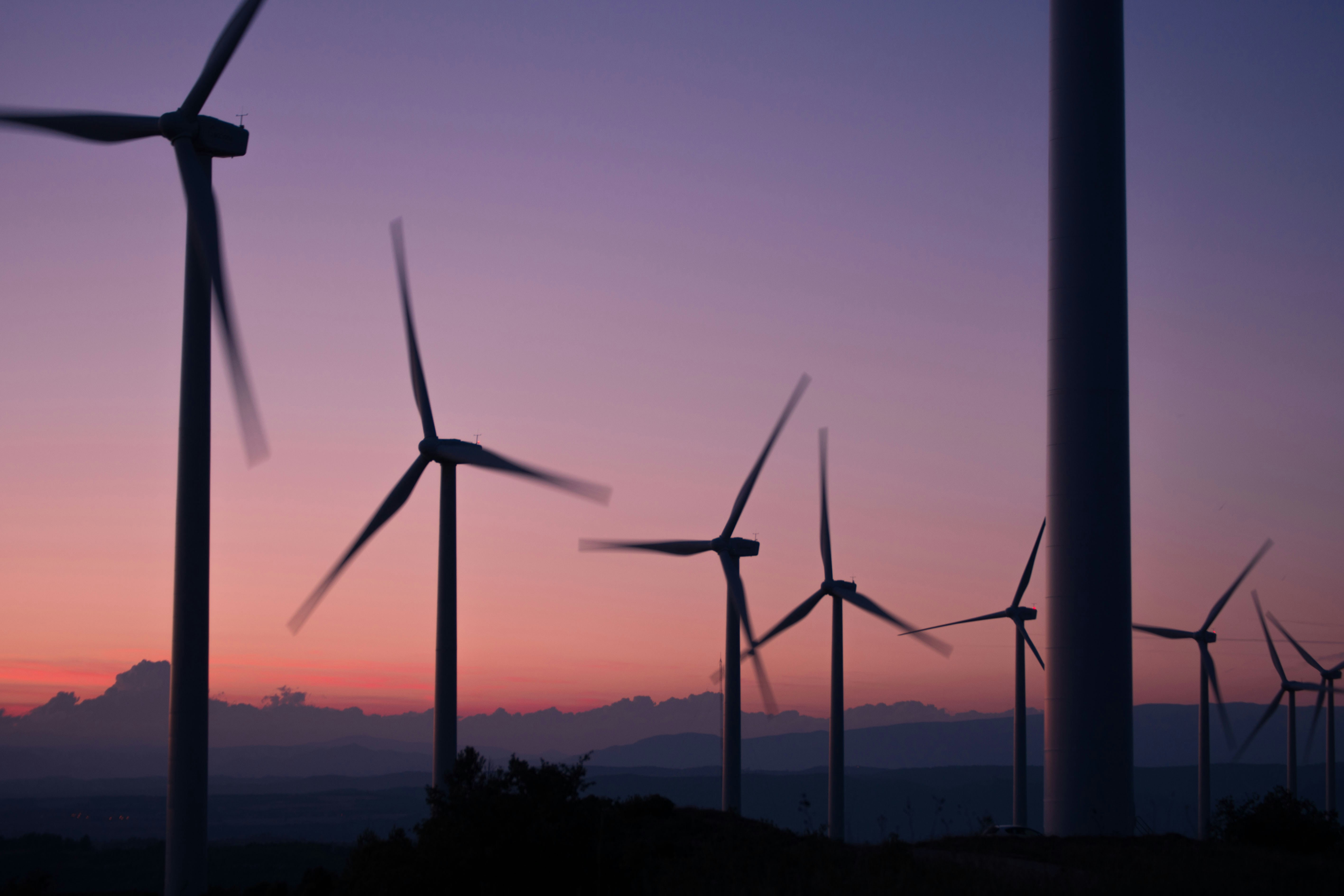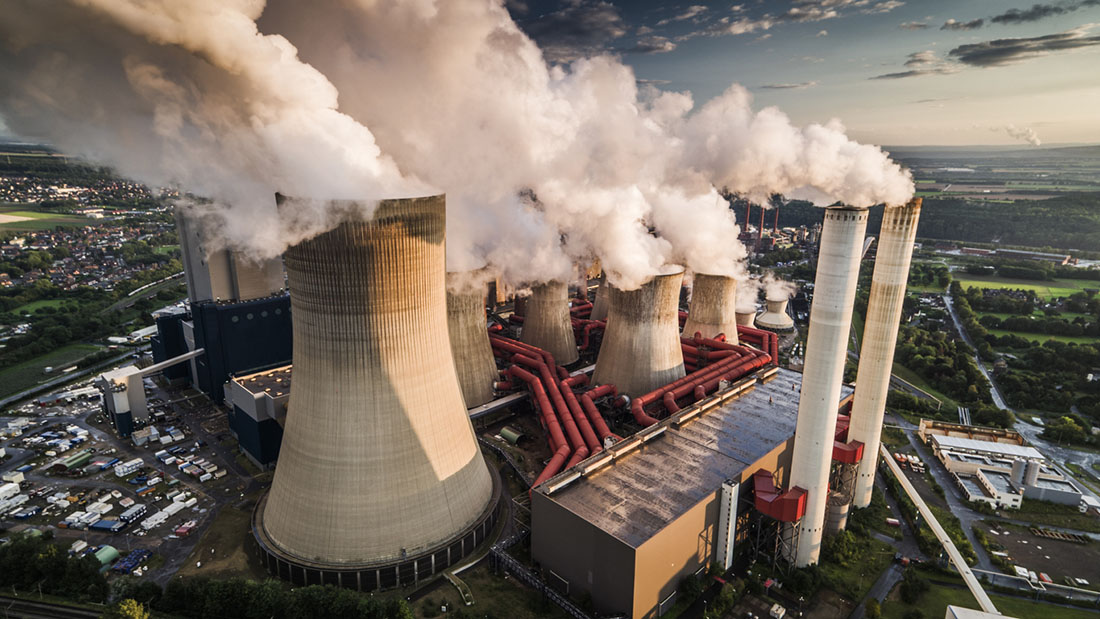1. Nationally Determined Contributions
Climate pledges that halve emissions by 2030: COP28 must deliver a clear commitment from national governments to revise their climate pledges – Nationally Determined Contributions (NDCs) – to ensure they collectively halve global emissions by 2030, and show even higher ambition for 2035. A key element of the architecture of the Paris Agreement is that national governments should update their NDCs every five years to reflect the ‘highest possible’ level of ambition on climate mitigation. NDCs should align with the agreement to pursue efforts to limit global warming to 1.5C, but so far, the process has failed to deliver. The first opportunity to submit revised NDCs was at COP26, but only 59% of countries did so. Only a handful have submitted revised NDCs with more ambitious, 1.5C-aligned targets since then.
It is essential that this pattern is not continued at COP28. National governments should submit revised NDCs for 2030 in advance of COP, and then use the political dialogue on the Global Stocktake to create a clear framework for the next round of NDCs (for 2035) that aligns with the findings of the Global Stocktake Synthesis Report. To achieve that, the new NDC framework should include:
- The need for NDCs to commit to long-term, economy wide, Net Zero targets;
- The need for NDCs to outline the system transformations that will be undertaken to deliver urgent and deep emissions reductions;
- The need for NDCs to demonstrate how a focus on equity and inclusion will be ensured to minimise disruptions to lives and livelihoods; and
- A clear process for holding governments to account on their NDCs, to ensure they reflect the highest level of ambition possible and are then swiftly implemented through policy packages.
2. Fossil fuel phase-out
An agreement to phase-out all fossil fuels: COP28 needs to deliver a clear political consensus on phasing-out all fossil fuels. The Global Stocktake makes clear that phasing down some fossil fuels isn’t enough; a ‘phase-out of all unabated fossil fuels’ is needed to deliver on the goals of the Paris Agreement. Recent academic research echoes this point, citing a lack of sufficient progress on carbon removals technologies to justify phase down alone. The continued use of coal, oil and gas in the energy sector contributes three quarters of global emissions, and yet several clear zero-carbon solutions exist such as wind and solar power. While fossil fuels may continue to play a transition role up until 2050, the science is clear that they may only do so if their emissions can be abated through carbon capture technologies; otherwise, they need to be phased-out.
Clear limitations on the role of carbon capture and storage technologies: The President’s ‘vision’ for COP28 contains no ambition for fossil fuel phase-out. Instead Al Jaber has consistently referred to the need to eliminate fossil fuel emissions. This emphasis on fossil fuel emissions abatement, allied to the fossil fuel industry’s ambitions to expand production will mean the role of Carbon Capture, Utilisation and Storage (CCUS) technologies is likely to be a contentious issue at COP28.
The science is clear: emissions removal technologies will be needed to reach Net Zero, as a limited amount of oil and gas will continue be used in the transition period. However, as recognised by the Global Stocktake, numerous challenges mean that the role of CCUS in emissions abatement is likely to be limited in the foreseeable future. Effective, environmentally-sound CCUS technologies still exist at only a limited scale globally (just 0.1% of total annual energy sector emissions are currently captured in this way) and the economic case for their use is weak compared to the alternatives.
Recently updated modelling from the International Energy Agency shows that time is running out for CCUS to play a major role in the abatement of energy-sector emissions. The COP outcome must reflect that, with the priority clearly being phasing-out fossil fuels altogether.
3. Global renewable energy capacity
A commitment to triple global renewable energy capacity by 2030: As three quarters of global emissions come from energy, fast-tracking the energy transition unsurprisingly sits at the top of the COP Presidency’s priorities list to deliver 1.5C. In parallel with a fossil fuel phase-out, the energy transition requires a dramatic expansion of renewable energy and a doubling down on energy efficiency. The Presidency wants the conference to conclude with a commitment to triple renewable energy capacity this decade, which G20 countries have agreed to endorse, and which aligns with the International Energy Agency’s latest projections on what the world must do to reach Net Zero.
Tripling renewable capacity (surpassing 11,000 GW) this decade is achievable and would help drive down demand for fossil fuels. The International Energy Agency predicts that meeting this target would cut unabated coal power production in half by the target date. Pledging to triple renewables would commit governments to strengthening policies and providing significant financial support. At COP27, countries acknowledged that $4 trillion per year would need to be invested in renewable energy up to 2030 to reach Net Zero by 2050. Developing countries in particular need support to reduce the high cost of capital for renewable energy projects.
To accommodate this additional renewable capacity, electricity grids will need to be expanded and modernised. In outlining the key opportunities for enhanced climate action, the Global Stocktake outcome should reiterate that efforts to triple renewable capacity include creating this enabling infrastructure.
4. Operationalising the Loss and Damage Fund
An agreement to operationalise the Loss and Damage Fund: COP28 must deliver an agreement on the processes for operationalising the Loss and Damage Fund – a fund finally agreed at COP27 designed to provide financial assistance to help vulnerable countries recover from the impacts of climate change. Since COP27 a Transitional Committee has been devising a set of proposals on the fund’s institutional arrangements, terms of reference, funding arrangements, sources of funding, and coordination and complementarity with existing funding arrangements.
After four scheduled meetings, and a fifth emergency meeting from 3-4 November in Abu Dhabi, the Transitional Committee agreed the broad parameters of an operating model but left key decisions to be discussed and adopted at COP28. Reaching a final agreement will be challenging. The US declared that it didn’t view the text that emerged from the committee’s last meeting as a ‘consensus view’ and on almost every point of the fund’s operating model there have been significant disagreements between developed and developing countries.
There are several points of contention. Many developing countries object to the World Bank hosting the fund on the grounds that it acts in Western interests and will charge high hosting fees. On funding structures, developing countries object to the lack of any obligation for developed countries to provide finance, with the draft agreement merely ‘urging’ them to do so. Meanwhile, the US objects to language only ‘encouraging’ other countries to contribute, which it sees as in opposition to the responsibilities of major polluters.
The tussle over the Loss and Damage operating model points to wider issues of trust within the UNFCCC system. The COP Presidency correctly states that delivering on Loss and Damage is critical to restoring trust among UNFCCC parties to tackle rising greenhouse gas emissions together. To improve trust, and to ensure the Loss and Damage Fund reflects changes in responsibility for global emissions, COP28 should deliver an agreement requiring developed countries and high-emitters such as China and Saudi Arabia to contribute to the Fund. Anything less than this risks a fundamental breakdown in the trust required to deliver urgent action not just on adaptation, but mitigation too.
5. Climate finance
A step-up in finance for climate mitigation: Finance is a crucial enabler of the Net Zero transition. To deliver success, COP28 must finally be the year that developed countries evidence provision of the promised $100 billion (bn) of annual climate finance to help developing countries reduce emissions. Failure to scale up climate finance has undermined trust between developed and developing countries, and hindered progress on negotiations in the run-up to COP28.
However, the $100bn is just the tip of the iceberg. Estimates vary, but the annual levels of climate finance needed by developing countries by 2030 are in the trillions. Countries that haven’t yet made pledges to the Green Climate Fund (the UN’s tool to mobilise the $100bn goal) must do so ahead of COP28. Countries must also adopt a more ambitious post-2025 climate finance goal by COP29. Since 2022, there have been a series of technical workshops to determine the new figure, as well as the goal’s timeframe, structure and sources of finance. The eighth of these workshops, held at COP28, needs to deliver a workable plan for each of the elements of the goal, which can then be finalised in 2024.
A doubled target for financing climate adaptation: It's not just finance for mitigation projects that COP28 must deliver; the UN recently confirmed that the finance gap for adaptation was 50% bigger than previously estimated. Since the impacts of the climate crisis are already being felt around the world – often by countries that have done the least to contribute to the problem – COP26 urged developed countries to double adaptation funding by 2025. At this year’s conference, more developed countries must bring clear plans for doing so.
Early signs of reform to the global financial system: Increasing climate finance from millions to trillions, as well as ensuring it is accessible and affordable to developing countries requires an overhaul of the entire global financial system. Transforming the global financial system will take more than one conference to achieve, but COP28 should produce the principles for a new financial framework that can deliver an inclusive transition to Net Zero.
A core aspect of the transformation must be the reform of multilateral development banks (MDBs) and the way they lend to developing countries, taking cues from the Prime Minister of Barbados, Mia Mottley’s, Bridgetown Initiative. One of the Initiative’s key asks concerns liquidity support, which includes channelling >$100bn of the IMF’s reserve currency (known as ‘Special Drawing Rights’ or SDRs) through MDBs. IMF member countries should now come to COP28 with increased SDR pledges. A second key demand of the Bridgetown Initiative is around restructuring debt, to provide developing countries with long-term low interest rates. In June, Mottley co-hosted a summit in Paris to advance efforts towards a more inclusive global financial system. A notable outcome was a call for all bilateral, multilateral and private lenders to adopt Climate Resilient Debt Clauses by 2025. This would allow climate-vulnerable countries to delay or pause debt repayments while responding to extreme climate disasters. A successful COP28 would involve some early commitments to Climate Resilient Debt Clauses.
The impact of having the UAE in the chair: Can COP28 deliver?
A successful COP28 will achieve meaningful outcomes on each of these topics. However, there is a legitimate question about whether the UAE as host and the COP28 President, Al Jaber, can deliver. There is a real concern that the UAE and Al Jaber’s Presidency could allow fossil fuel interests to interfere with the formal negotiations – to a greater extent than ever. Indeed, two former employees from Abu Dhabi National Oil Company (ADNOC) will serve as UAE negotiators at COP28. On the other hand, Al Jaber could also be perfectly placed to rally the oil and gas sector to engage seriously with the aims of the conference.
Can Al Jaber use his industry connections to pull off ‘climate jujitsu’ at COP28?
If Al Jaber could get fossil fuel companies to transform their approach to engaging with international climate action, COP28 would mark a pivotal moment for the global energy transition. There are some signs that Al Jaber is prepared to confront his industry peers with uncomfortable realities: last month, he told the Financial Times he was trying to “get [the oil industry] to agree and sign up to the phase down of fossil fuels.”
However, Al Jaber is likely to face resistance from within his own ranks. Petrostates and fellow National Oil Companies (NOCs) pose a significant threat to progress on Net Zero: at COP27 last year, Saudi Arabia led the charge to water down a motion to phase-down all fossil fuels, and also blocked a similar motion at the G20 meeting in July.
The role of NOCs in creating – and addressing – the climate crisis is critical, but often overlooked. Twelve out of the world’s 20 highest emitting companies are NOCs, and they control 75-90% of global oil reserves. In short, the energy transition simply can’t happen without them. But it is difficult to hold them to account for their contribution to climate change; their mandate is set by governments rather than investors or consumers, and information on their revenues, strategies and emissions is opaque.
When it comes to sustainability ambitions, our analysis of NOCs paints a lacklustre picture. Some NOCs have no public climate targets at all, including the National Iranian Oil Company which holds the second largest oil reserves in the world. Where NOCs have made public commitments to reduce emissions, they aren’t always backed up with coherent plans. The UAE’s ADNOC, for instance, aims to achieve Net Zero by 2045 and has earmarked $15bn for investment in low carbon solutions, but this is at odds with its plans to spend $150bn on expanding oil and gas capacity this decade.
Across the board, NOCs fail to address the emissions arising from the use of the fossil fuels they produce. ADNOC’s Net Zero commitment excludes these Scope 3 emissions, as do early iterations of the plans from the Global Decarbonisation Alliance, an industry-wide initiative that Al Jaber is set to launch at COP28. While cutting emissions (especially methane emissions) from the production of fossil fuels is important, using oil and gas generates almost three times the volume of emissions from production. Ignoring these Scope 3 emissions would spell climate disaster. Yet, addressing them means confronting an uncomfortable truth for NOCs: their current business models must be phased-out.
For Al Jaber to pull off such ‘climate jujitsu’ at COP28 – leveraging his role at the heart of the fossil fuel sector to flip it into becoming a catalyst for the global energy transition – would be a tall order.
Indeed, his influence on the outcome of COP28 more broadly needs to be seen in context. A successful COP is not wholly or even mostly dependent on the President: when governments negotiate at COP, they do so under the auspices of the United Nations. Ultimately it is international governments that must reach consensus on how they will fulfil the aims of the Paris Agreement. What the US and China decide to do will have far more impact than anything said or done by UAE’s COP President.
Among governments, momentum is building on the need to phase out fossil fuels. More than 80 countries will attend COP with the shared goal of negotiating this commitment. The private sector too, is placing pressure on COP28 to deliver on fossil fuel phase-out, with over 130 of the world’s largest businesses calling for an explicit timeline to be included in the final text.
For success on this and the other key issues we need to see commitments on at COP28. The geopolitical tensions and divisions the world is currently gripped by will need to be set aside. Governments must come to COP28 ready to seize the opportunity to commit to urgent, widescale change in the global approach to climate mitigation, adaptation and finance.
And if the COP President can prove his critics and doubters wrong and succeed in flipping the fossil fuel industry from the biggest blocker to the energy transition to its biggest accelerator, COP28 will be remembered as the moment when climate action stepped into a new era.






